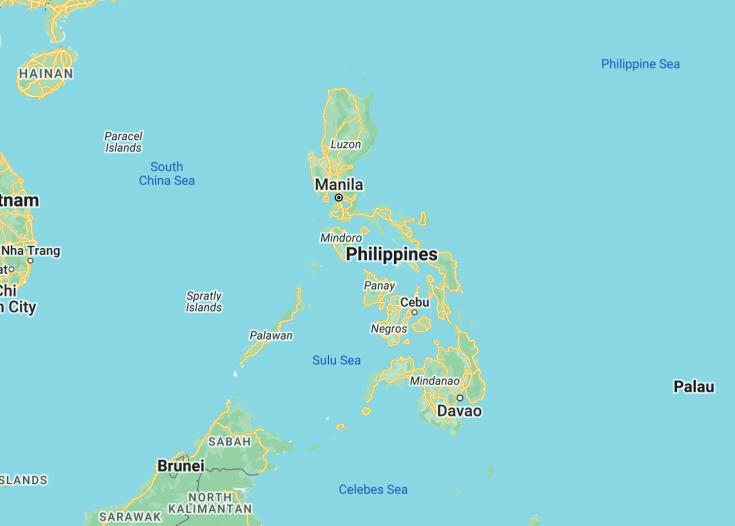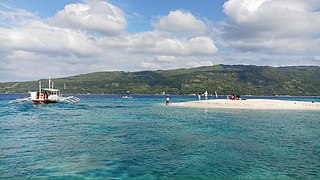The Philippines, a vast archipelago boasting over 7,000 islands, seamlessly combines nature’s majesty with cultural richness. From sun-kissed beaches and lush terrains to centuries-old churches and vibrant festivals, it invites visitors to immerse in a captivating tapestry of sights, tastes, and traditions, promising a journey that’s both invigorating and enlightening.
Before traveling, research the specific island’s microclimate; weather can differ remarkably between regions.
Seek local insights: dine at community-recommended eateries and participate in regional festivities for an authentic experience.
Philippines: A Tropical Paradise in Southeast Asia
| Capital | Manila |
| Time in Philippines | GMT +8 |
| Language spoken | Filipino and English |
| Population | 110,981,000 (World Bank, 2020) |
| Religion | Roman Catholic (80.6%) Muslim (5.6%) Evangelical (2.6%) Iglesia ni Cristo (2.4%) Other Christian (6.8%) Other (1.8%) |
| Currency | Philippine Peso (PHP) |
| Airports | Ninoy Aquino International Airport Mactan-Cebu International Airport Davao International Airport Clark International Airport |
The Philippines, a nation of 7,107 islands, is a tropical paradise located in Southeast Asia. Known for its stunning beaches, crystal-clear waters, and vibrant coral reefs, the Philippines is a popular destination for tourists seeking a tropical getaway.
With a rich history influenced by Spanish, American, and Asian cultures, the Philippines offers a unique blend of traditions and customs. Its capital, Manila, is a bustling metropolis with a mix of historic and modern landmarks.
Home to over 110 million people, the Philippines is a diverse country with a multi-ethnic population. The official languages are Filipino and English, ensuring ease of communication for travelers.
The majority of Filipinos are Roman Catholic, with more than 80% of the population identifying as such. Islam, Protestantism, and other Christian denominations also have a significant presence in the country.
The Philippine Peso (PHP) is the official currency, and it is widely accepted throughout the country. Despite being a developing nation, the Philippines has a well-developed tourism infrastructure, with numerous airports connecting visitors to its various islands.
Where is Philippines located?
The Philippines is located in Southeast Asia, consisting of an archipelago comprised of thousands of islands. It is bordered by the Philippine Sea to the east, the South China Sea to the west, and various other neighboring countries.
What is Philippines famous for?
The Philippines is famous for its stunning natural landscapes, including its pristine beaches, lush rainforests, and breathtaking volcanoes. The country is also known for its warm hospitality, delicious cuisine, and vibrant festivals, such as the colorful MassKara Festival and the lively Sinulog Festival.
History
The history of the Philippines is a fascinating tale of colonization, revolution, and resilience. The archipelago’s story begins with its foundation as a city, and stretches all the way to the present day. Let’s delve into the different historical periods that have shaped this nation.
Prehistoric Era – 1521
Before the arrival of the Spanish in 1521, the Philippines was home to various indigenous groups who had developed their own unique cultures and societies. These groups, including the Austronesian-speaking peoples, lived in small villages and relied on agriculture and fishing for their subsistence.
One notable civilization that emerged during this period was the Kingdom of Tondo, which played a significant role in early Filipino history and trade relations with neighboring kingdoms.
1521-1898 – Spanish Colonial Period
The arrival of the Spanish explorer Ferdinand Magellan in 1521 marked the beginning of the Spanish colonial era in the Philippines. The Spanish established settlements and began spreading Christianity, while also exploiting the country’s resources.
For nearly three centuries, the Philippines was under Spanish rule. This period saw the introduction of the encomienda system, which forced indigenous peoples to work under Spanish landlords, and the establishment of the Manila-Acapulco Galleon Trade, which connected the Philippines with Mexico and other parts of the world.
1898-1946 – American and Japanese Occupation
In 1898, the United States assumed control of the Philippines after the Spanish-American War. Under American rule, significant changes were introduced, including the implementation of modern infrastructure, the introduction of public education, and the promotion of English as the medium of instruction.
However, the Filipinos’ aspiration for independence remained strong, leading to the outbreak of the Philippine Revolution and the subsequent Philippine-American War. The country briefly gained independence in 1946, but not before enduring a painful period of Japanese occupation during World War II.
1946-present – Post-Independence Period
Since gaining independence, the Philippines has struggled with political, economic, and social challenges. Various administrations have grappled with issues such as corruption, poverty, and armed conflict with insurgent groups.
Nevertheless, the Philippines has also seen progress in areas such as economic growth, technological advancement, and cultural development. The country has become a popular tourist destination known for its beautiful beaches, vibrant festivals, and warm hospitality.
Visit Philippines
What to see and do in Philippines
The Philippines offers a wide range of attractions for visitors to explore. From stunning white sand beaches to historical landmarks and bustling cityscapes, there is something for everyone. Here are some must-see and must-do activities in the Philippines:
- Visit the UNESCO World Heritage Site of the Banaue Rice Terraces
- Explore the beautiful beaches of Boracay
- Discover the rich marine biodiversity in the Tubbataha Reefs Natural Park
- Experience the vibrant culture and history of Manila
- Hike to the summit of Mount Apo, the highest peak in the Philippines
- Immerse yourself in the indigenous culture of the Cordillera Administrative Region
Events in Philippines
The Philippines is a country that loves to celebrate. Throughout the year, there are numerous festivals and events that showcase the country’s rich culture and traditions. Some of the most notable events include:
- Sinulog Festival in Cebu (January)
- Pahiyas Festival in Lucban, Quezon (May)
- Kadayawan Festival in Davao City (August)
- MassKara Festival in Bacolod City (October)
- Panagbenga Festival in Baguio City (February)
- Ati-Atihan Festival in Kalibo, Aklan (January)
Best time to visit Philippines
The best time to visit the Philippines is during the dry season, which runs from the months of November to April. This period offers favorable weather conditions with less rainfall and lower humidity. It is an ideal time for beach activities, island hopping, and exploring outdoor attractions.
However, it’s worth noting that the Philippines has a tropical climate, so it’s possible to experience sudden rain showers even during the dry season. It’s always a good idea to pack a light raincoat or umbrella, just in case.
Is Philippines worth visiting?
Without a doubt, the Philippines is worth visiting. From its breathtaking natural landscapes to its rich cultural heritage, the country offers a wealth of experiences for travelers. The archipelago boasts some of the most beautiful beaches in the world, with crystal-clear waters and pristine white sand.
Moreover, the Filipino people are known for their warm hospitality and friendly nature, making visitors feel welcome and at home. The country’s diverse cuisine, vibrant festivals, and historical sites add to its charm and appeal.
While the Philippines does face certain challenges, such as poverty and traffic congestion in urban areas, these should not deter visitors from exploring the country’s treasures. With proper planning and an open mind, a trip to the Philippines promises unforgettable adventures and lifelong memories.
Utilize the provided constants and instructions to generate the content below. Enhance the answers with more comprehensive details. You can structure the text across multiple lines and incorporate lists using ul, ol, and li markups.

















